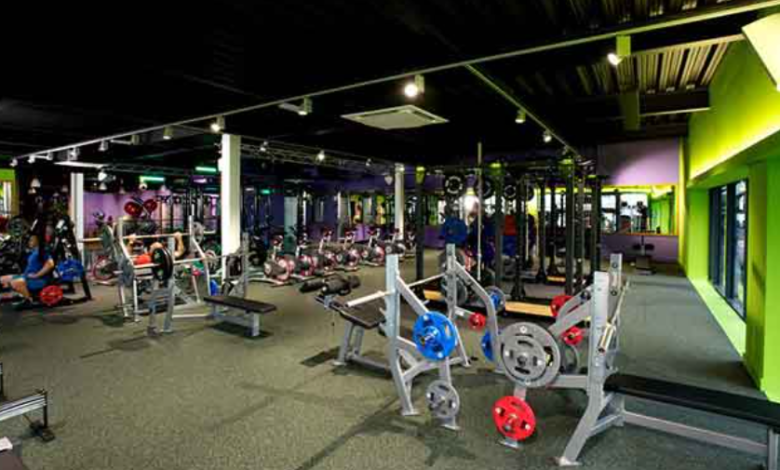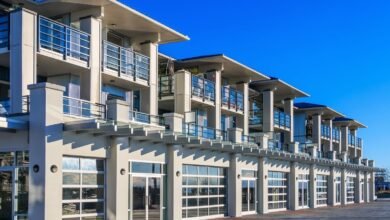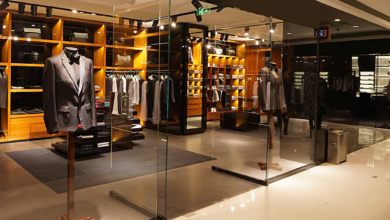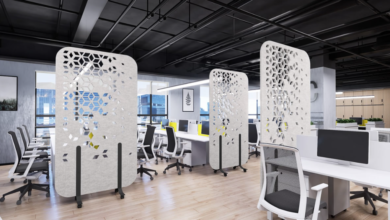Strong Flooring for High-Performance Gyms

Setting up a commercial gym involves more than choosing the right machines or adding mirrors to the walls. The flooring is often overlooked but is one of the most critical components in any training environment. Rubber gym flooring has become the industry standard for fitness centers, athletic facilities, and training studios, and for good reason. It offers superior durability, impact absorption, safety, and visual appeal—all essential for a high-traffic, high-intensity workout space.
In this article, we’ll explore everything you need to know about rubber gym flooring—from its benefits and different types to usage zones, maintenance, and what to look for when choosing the right product for your facility.
Why Rubber Gym Flooring Is Essential
Every piece of equipment and every type of exercise relies on a solid, dependable foundation. Without proper flooring, a gym can quickly become unsafe, noisy, and expensive to maintain. Here’s why rubber gym flooring is the go-to choice:
1. Shock Absorption and Injury Prevention
Rubber flooring absorbs impact from jumping, running, and weight dropping. This cushioning helps reduce stress on joints and lowers the chance of injury for gym users.
2. Floor and Equipment Protection
Dropping a dumbbell or dragging a weight sled on bare concrete will eventually cause cracks or damage. Rubber mats act as a protective barrier, extending the lifespan of your subfloors and gym equipment.
3. Noise Reduction
Heavy machines and foot traffic can make gyms loud. Rubber flooring dampens vibrations and reduces sound levels, creating a quieter, more enjoyable environment for users.
4. Anti-Slip Surface
Sweat, water, or cleaning solutions can create slippery conditions. Rubber’s naturally textured surface provides strong grip even in wet areas, reducing the risk of slips and falls.
5. Hygienic and Easy to Clean
With proper sealing, rubber flooring resists moisture and bacteria. It can be cleaned with simple equipment and sanitizing products, maintaining a clean and healthy space.
See also: Business Productivity Tools: How Audio-to-Text Conversion Boosts Workplace Efficiency
Types of Rubber Gym Flooring
Rubber flooring comes in various formats to suit different needs and environments. Here are the most common types:
Rubber Tiles
These interlocking tiles are convenient to install and replace. They’re ideal for areas that may need frequent reconfiguration.
- Best for: Weightlifting zones, personal training areas
- Pros: Easy to move or replace, customizable layouts
- Cons: Seams can collect dirt if not tightly sealed
Rubber Rolls
Rubber rolls provide a seamless look and are perfect for large spaces. They offer uniform coverage with fewer joints.
- Best for: Cardio areas, group fitness rooms, full-floor installations
- Pros: Clean appearance, strong under heavy machines
- Cons: Heavier and harder to install without assistance
Rubber Mats
These are stand-alone mats placed under equipment like treadmills, squat racks, or weight benches.
- Best for: Under specific machines or workstations
- Pros: Portable, budget-friendly
- Cons: Not suitable for full-floor coverage
High-Density Rubber
Denser rubber is more resistant to compression and more effective at handling heavyweight drops.
- Best for: CrossFit boxes, Olympic lifting zones
- Pros: Superior performance and longevity
- Cons: Higher cost and more permanent installation
Where to Use Rubber Flooring in a Gym
Rubber gym flooring is versatile and can be used across multiple zones of your facility. Here’s a breakdown of ideal placements:
| Zone | Recommended Type |
|---|---|
| Weightlifting Area | ¾-inch rubber tiles or rolls |
| Cardio Zone | ⅜ to ½-inch rubber rolls |
| Functional Training Area | ½ to ¾-inch tiles or turf + rubber combo |
| Stretching Area | ¼ to ⅜-inch rubber flooring |
| Reception/Entryway | Decorative rubber mats or tiles |
| Locker Rooms | Non-slip rubber with drainage |
Each area serves a different function and requires flooring with appropriate thickness, texture, and load-bearing capability.
Choosing the Right Thickness
The thickness of rubber gym flooring directly impacts performance, safety, and comfort. Here’s a general guide:
- ¼ inch (6mm): Best for low-impact areas like yoga or warm-up zones
- ⅜ inch (9mm): Suitable for moderate weight training and cardio areas
- ½ inch (12mm): Ideal for heavy lifting zones
- ¾ inch (18mm+): Designed for extreme impact, such as Olympic weightlifting
Thicker flooring is more expensive but offers higher durability and better sound dampening.
Eco-Friendly and Recycled Options
Many rubber flooring options are made from recycled tires or other sustainable materials. These options are not only environmentally responsible but also cost-effective. Recycled rubber performs similarly to virgin rubber and supports your gym’s green building goals. Always check for certifications if sustainability is a concern for your business.
Key Features to Look For
When buying rubber gym flooring, pay attention to these factors:
- Density and Compression Rating: Higher density provides better shock absorption and durability.
- Surface Texture: Choose smooth for stretching zones and grippy for lifting areas.
- Color Options: Flecked colors hide dirt and wear better than solid black.
- Edge Finishing: Beveled or straight edges affect the seamless look and transition between spaces.
- Moisture Resistance: For high-sweat zones, look for sealed or non-porous rubber.
Installation Guidelines
Installing rubber flooring can be done professionally or as a DIY project, depending on the type:
- Tiles: Snap together easily with minimal tools
- Rolls: Require adhesives and more precise cutting
- Mats: Simply lay under equipment without need for securing
Prepare your subfloor by cleaning and leveling the surface. Use ramps or transitions between different flooring heights to avoid tripping hazards.
Care and Maintenance Tips
Rubber gym flooring is low maintenance but still requires routine care to keep it looking and performing well:
- Daily Cleaning: Sweep or vacuum to remove dust, dirt, and debris
- Weekly Mopping: Use mild detergent and a damp mop for deeper cleaning
- Avoid Harsh Chemicals: Never use bleach or oil-based cleaners, which may degrade rubber
- Deep Clean Monthly: Auto scrubbers or professional cleaning helps maintain appearance in high-traffic areas
Visual Appeal and Branding
Rubber doesn’t have to look dull. Many suppliers offer color speckle options or full-color designs. Some even allow you to embed your gym logo directly into the flooring. This not only enhances the professional look of your facility but also strengthens brand identity and improves customer perception.
Final Thoughts
Rubber gym flooring offers everything a professional gym needs—resilience, safety, noise control, and design flexibility. It’s built to take on the most intense workouts and heaviest equipment while maintaining a clean, attractive look. Whether you’re opening a new fitness center or upgrading your existing space, investing in high-quality rubber flooring ensures your foundation is as strong as the athletes who train on it.




